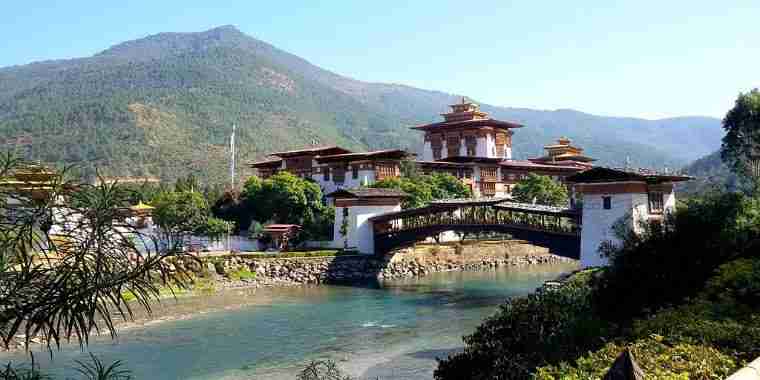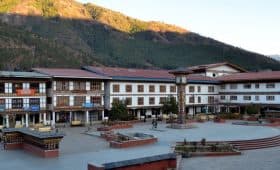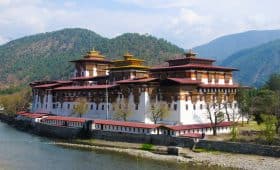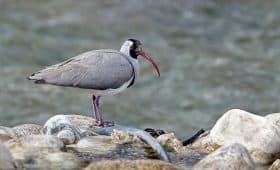Bhutan in January is the time of winter. Unlike other seasons, January in Bhutan is cold yet, it is bearable.
The month of January, in fact, is an ideal time to visit Bhutan especially for those who want to avoid the crowd and the extra cost.
The weather in the lower regions is dry and the skies are clear. Also, you will get fantastic views of the mountains and the landscape in general.
The temperature during this time ranges between -3 to 12 degree Celsius. As for snow, it is generally limited to the higher altitudes and depends on the day to day weather.
The lower regions may receive a day or two of snow. Other days it is bright and sunny during the day.
Overall, Bhutan in January is mostly safe and a great time to travel for those who brave low temperatures. And of course for those willing to explore a unique country with amazing natural and cultural beauty.
Table of Contents
- Highlights of Bhutan in January
- Weather and Climate of Bhutan in January
- Cost of Bhutan Tour in January
- Accommodation During Bhutan Tour in January
- Food During Bhutan Tour in January
- Clothing During Bhutan Tour in January
- Snow in Bhutan in January
- Treks in Bhutan in January
- Festivals to Witness in Bhutan in January
- Some Tips for Tours to Bhutan in January
- Conclusion
Highlights of Bhutan in January
- Avoid the crowd unlike other peak season and enjoy the peaceful experience
- Great time to spot the rare Black-Necked cranes
- Amazing clear views of the snow-capped mountains
- Enjoy lower daily tariff during the off-season
- Explore Thimphu- the capital of Bhutan
- Witness the Tiger’s Nest monastery perched on a vertical cliff
- Spectacular view of the Himalayan peak at Dochula en route to Punakha
- Phobjikha valley- a gorgeous wildlife preserve that is home to exotic wildlife and nature
- Gangtey valley- home to the Gangtey monastery
Want more information? Send us your query, and our experts will get back to you within 24 hrs.
Weather and Climate of Bhutan in January
January, being the winter season in Bhutan, is cold. Yet, you will enjoy clear skies, great visibility and sunny days. The temperature ranges between -3 to 12 degree Celsius.
The weather in the highest altitudes are chilly but in the lower region, it is bearable. Some days you may even witness snow falls during January.
These snowfalls, however, can cause temporary roadblocks. Do not worry! The Department of the road will clear the highway pretty quick.
Besides the cold, traveling to Bhutan in January is worth it. During this time there will be fewer tourists which will allow you to spend intimate time with the locals. Moreover, clear and crisp weather offers a picturesque view of the Himalayas.
And in case of roadblocks and flight delays due to the weather conditions in January, it is important to have an extra day or two.
Cost of Bhutan Tour in January
Bhutan has a system of eco-friendly tourism. And tourists here require to be on tours for their entire trip. This is compulsory.
Hence for every tour in Bhutan, tourists have a Minimum Daily fee that you have to pay for the entire tour. This pay differs in low and high season. And for January due to low season, the pay is USD 200 per person per day which is much better than USD 250 charged otherwise.
Yet, while this may seem expensive, it covers everything you require for your trip. And, includes all your travel expenses within the country, your hotel accommodation, all meals. Also, it covers entry to all the attractions in your itinerary, the cost of your guide/driver and renting private vehicle.
If you are traveling solo or in groups of less than 2 then you will have to bear an extra surcharge.
Single traveler– USD 40 per night
Group of 2 travelers– USD 30 per person/ per-night
Accommodation During Bhutan Tour in January
January being the low season you will not have to pre-book your rooms. During this month you will have a variety of choices for accommodation and also you can get off-season discounts.
The standard accommodation that you will get for the Minimum Daily Fee is a three-star hotel. But if you are willing to have a luxurious stay, you can choose 5-star hotels like Amankora, Uma Paro and Hotel Taj.
However, doing so means that your daily minimum fee will go above the minimum and that your tour will cost you more.
Another option is you can choose the basic hotels and lodges. These provide you with simple and clean rooms. They include basic facilities of bathrooms, hot showers, and most hotel do offer rooms with electric heaters.
To add, one can also opt for home stays. The interesting part about homestay is it will allow you to get a personal and closer look into the lifestyle and tradition of the local Bhutanese.
Yet, since all houses in Bhutan do not have hot shower facilities, they will provide hot water for you if you ask them for it.
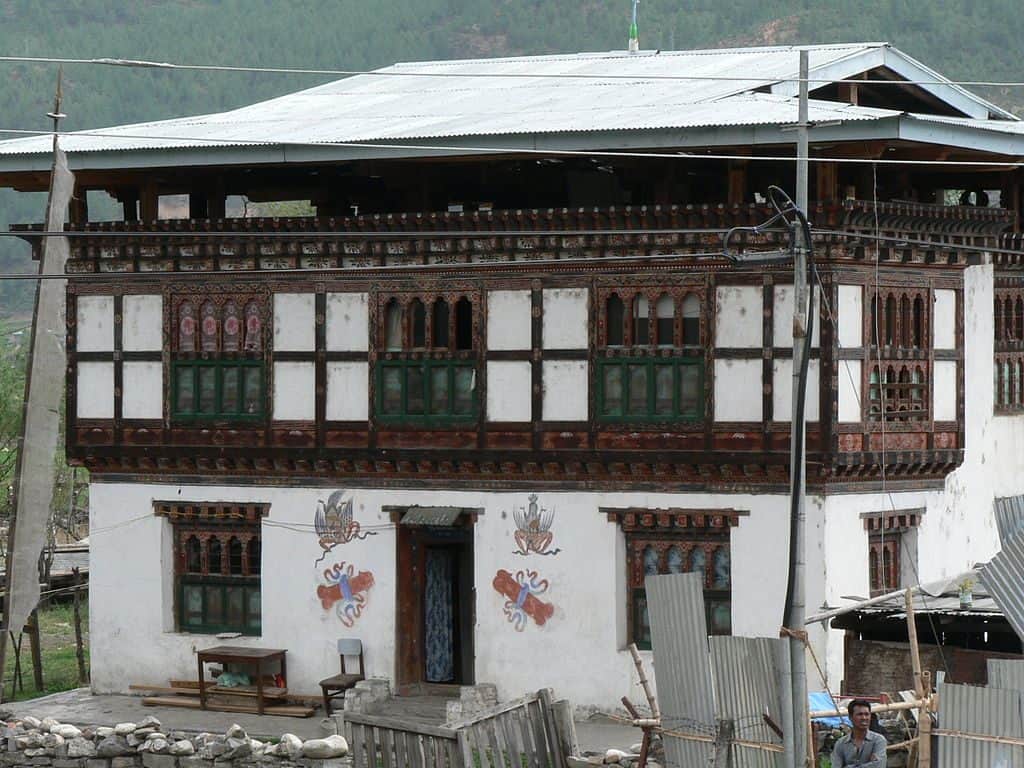
Food During Bhutan Tour in January
Most of the good Bhutanese restaurants are the ones found in the hotels themselves. The most preferable way to eat in restaurants of Bhutan inside a hotel is to opt for elaborate Buffet-style servings.
Rice and vegetables with Chilli, esp Ema-Datsi (National Dish consisting of Chilli and cheese) is the traditional and staple meal here. So, do not forget to try them. Also during January when it’s cold you can try the local soup dumplings and Tibetan momos with soup to keep yourselves warm.
Besides Suja (butter tea) and Ara (local spirit brewed from rice, wheat or corn) are common beverage you can try in Bhutan.
Clothing During Bhutan Tour in January
January is the mid-winter in Bhutan which means you should prepare yourselves for the cold. The temperature during this time can drop to minus degrees.
Hence to keep yourself warm, make sure you pack warm fleece jackets, pant, mufflers, warm gloves, and snow boots.
Since January in Bhutan witnesses snowfall, it is wise to dress in layers while trekking or touring. This is the most convenient way as you can add or remove clothes according to the climatic condition.
Snow in Bhutan in January
Snowing is quite rare in Bhutan’s most populous areas. But when it does, it happens during January.
And it is enough reason for His Majesty to decree holidays and everyone goes out to enjoy the snowball fights, sculpturing snowmen etc.
Usually, the snow melts during the day or two. Anyway while crossing the higher passes like Dochula and Chele La, you might encounter some snow. It is usually about a few centimeters which is enough to offer you nice and rare clicks.
Treks in Bhutan in January
There is various low altitude trek which you can take in January in Bhutan. Some treks offer spectacular views and landscapes during January.
In January, the high altitude treks come under the spell of heavy Himalayan snow with practically impregnated passes. However, the low altitude regions enjoy warm and splendid weather for the trek.
You can take these treks throughout the year, except June to early September when the weather tends to be wet for the trek.
Samtengang Winter trek
Starting from Punakha, Samtengang winter trek is a short and suitable winter trekking in Bhutan. It is considerably simple and easy with average altitude rising not more than 1900m.
Due to low altitude, this region preserves a warmer climate which is pleasant and soothing during January. The trekking trail is devoid of uncomfortable steeps and heights making the trail quite smooth for the amateur hikers.
During this trek, you will get the opportunity to visit various villages like Sha and Chungsakha. There, you will get to experience the true western Bhutanese culture. This trek is approx 54 km in length.
Beside the winter months, you can take this trek in autumn and spring as well.
Nabji Korphu trek
Nabji Korphu trek is an enchanting winter trek in the lowland region of central Bhutan. This trek is short, easy and is suitable in the month of January offering enjoyable journey around the scenic Trongsa Dzongkhag.
The trail is warm and pleasant as the trail stays between 1000 to 1500 min altitude. And there is a wide array of flora and fauna observable along the route.
Hikers on this trek will have plenty of opportunities to experience traditional rural life.They will spend nights in Nabji, Korphu, and Nyimshong.
Gasa Tsachu Trek
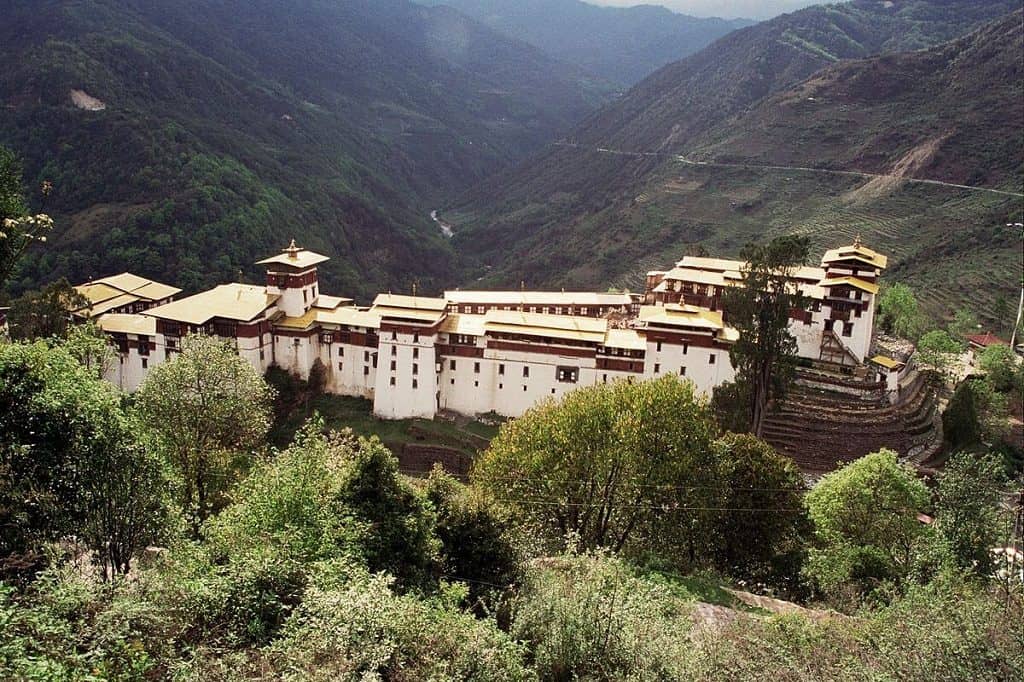
The Gasa Tsachu (Hot Spring) trek is one of the easier and shorter treks in Bhutan which is suitable in January due to its low altitude.
This trail is parallel to and above the Mo Chhu and the trail connects the Tsachu from Tashitang road head in one day and then leads onward to Damji.
Despite the minimum difference in altitude between the starting and the ending point, there is some up and downhill walk which make the trek a little strenuous. However, the relaxation at Tsachu and the views of Gasa Dzong are absolutely rewarding.
Moreover, this trek gives you an amazing experience of hot springs. The locals visit the hot spring for medical reasons. In January you can enjoy the peace and tranquility of these regions.
Phobjikha Valley Trek
Phobjikha valley trek which is extremely popular and also a part of Gangtey trek in central Bhutan. This trek is a treat for those with a deep affection for nature.
This trek will take you to the beautiful Phobjikha valley( 3000m), one of the few glacial valleys in Bhutan. After crossing over the pass you will soon come to the great monastery of Gangtey.
The village of Phobjikha lies a few kilometers down from the monastery, on the valley floor. This quiet, remote valley is a great place to trek in January. Here you will spot the rare black-necked cranes who migrate here annually from the Tibetan plateau. It is a short trek at relatively low elevations which visits several remote villages.
Festivals to Witness in Bhutan in January
Bhutan, being a devout Buddhist country, has a huge number of festivals throughout the year, and the month of January is no exception. Hence one of the major highlights while traveling in Bhutan is witnessing its rich culture and its colorful festivals.
Hence some of the festivals that you will get to see in January are
- Lhuentse Tshechu
- Trongsa Tshechu
- Nabji Lhakhang Drup
- Nyilo
Tsechus are ceremonies held on auspicious days of the month as per the Buddhist calendar. They are a rich form of the oral history tradition.
Through these festivals, Bhutanese people pass on the values, mythology and spiritual beliefs through dance dramas. During these performances, the monks dance with a special mask on their face.
People here celebrate these festivals in honor of Guru Rinpoche. Guru Rinpoche was a Buddhist follower who mastered esoteric Buddhism. And is the one who introduced Buddhism to Bhutan in the 18th century.
These festivals are a great way to celebrate the Bhutanese lifestyle and culture.
Some Tips for Tours to Bhutan in January
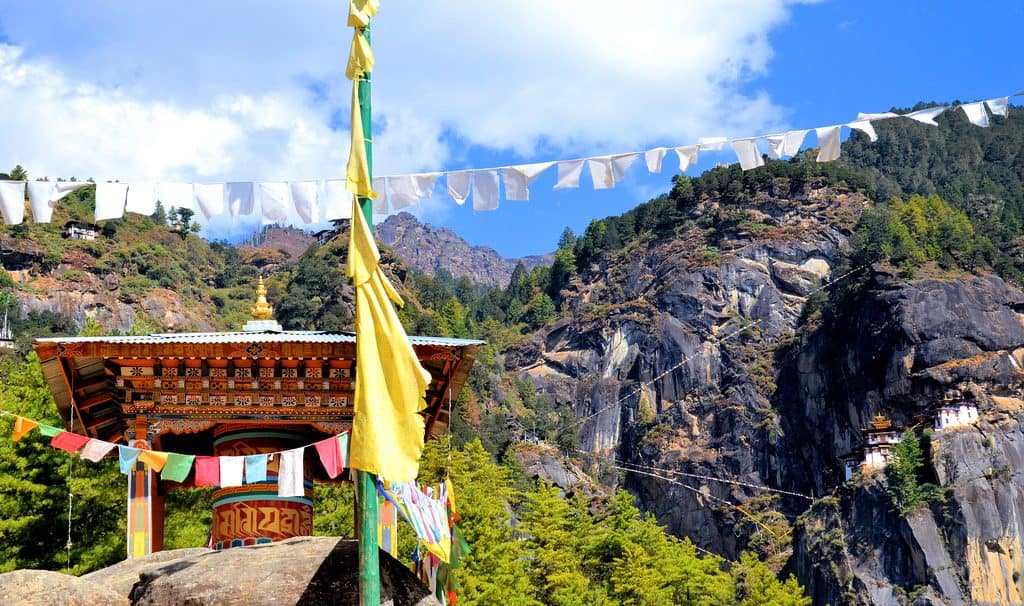
- January in winter is actually the best time for a Bhutan homestay, where you can stay with a local family for a few days from your trip. And experience life as the normal people of the mighty Himalayan kingdom live.
- Dressing in layers is the way to go in January. The weather in Bhutan changes in altitude and the duration of the day.
- Solo tours to Bhutan are not possible for citizens from any country besides citizens of India, Bangladesh, and the Maldives.
- Ask your local guide if you can take photos in the different dzongs, monasteries, stupas you visit. Some of them have strict restrictions on photographs.
- Bhutan has banned Tobacco products. Hence there are penalties for smoking in Public. So, ask your guide where you can smoke.
- Confirm the dates of the festivals with your tour operator. The dates do change. Bhutan follows the lunar calendar.
- Try the local cuisine. The local dishes like Ema Datshi and soup dumpling are great to warm up your body in the cold. Also, you can try butter tea which is the local drink in Bhutan.
- Carry enough cash for the daily expense, to buy souvenirs, and to tip because cards in Bhutan is not widely used.
Conclusion
Bhutan in January is moderately cold and totally bearable. During this time, Bhutan experiences fewer tourists. Moreover, due to the low season the trip will be more affordable.
Traveling to Bhutan in January allows you to enjoy the peace and tranquility of the country with perfect temperature.
For further question or queries, please contact us. It is our pleasure to guide and assist you in planning the trip for you.
Want more information? Send us your query, and our experts will get back to you within 24 hrs.
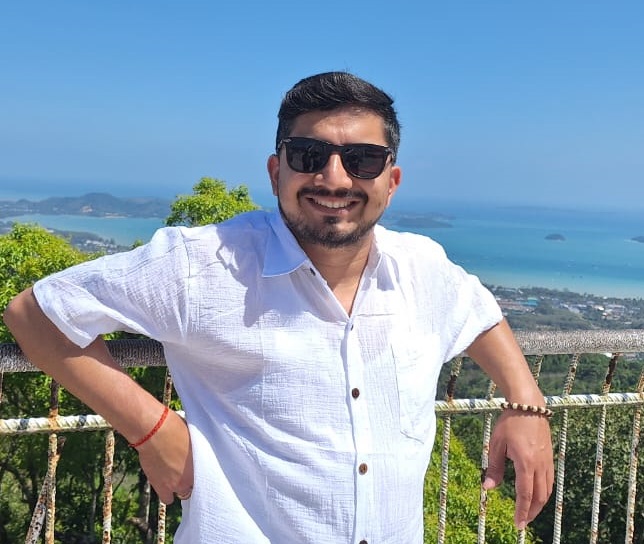
Madhav started working as a porter in 2001 and then moved on to work as a trekking guide. After working in the trekking and tourism industry for eight years, he co-founded Mosaic Adventure in 2009.
Madhav has trekked to most of the trekking destinations in Nepal, including Everest Base Camp Trek, Annapurna Base Camp, Annapurna Circuit Trek, Poon Hill Trek, Jomsom Muktinath Trek, Indigenous Peoples Trek, Langtang Valley Trek, Mardi Himal Trek, and all of the day hikes around Kathmandu.
He has also extensively traveled to other countries such as Australia, the USA, the UK, France, Hong Kong, Japan, China, the Philippines, the UAE, Saudi Arabia, Bahrain, Thailand, Turkey, and India. Madhav is the one who answers most of your questions about trekking and tours and helps to plan your trip by giving a personal touch.

